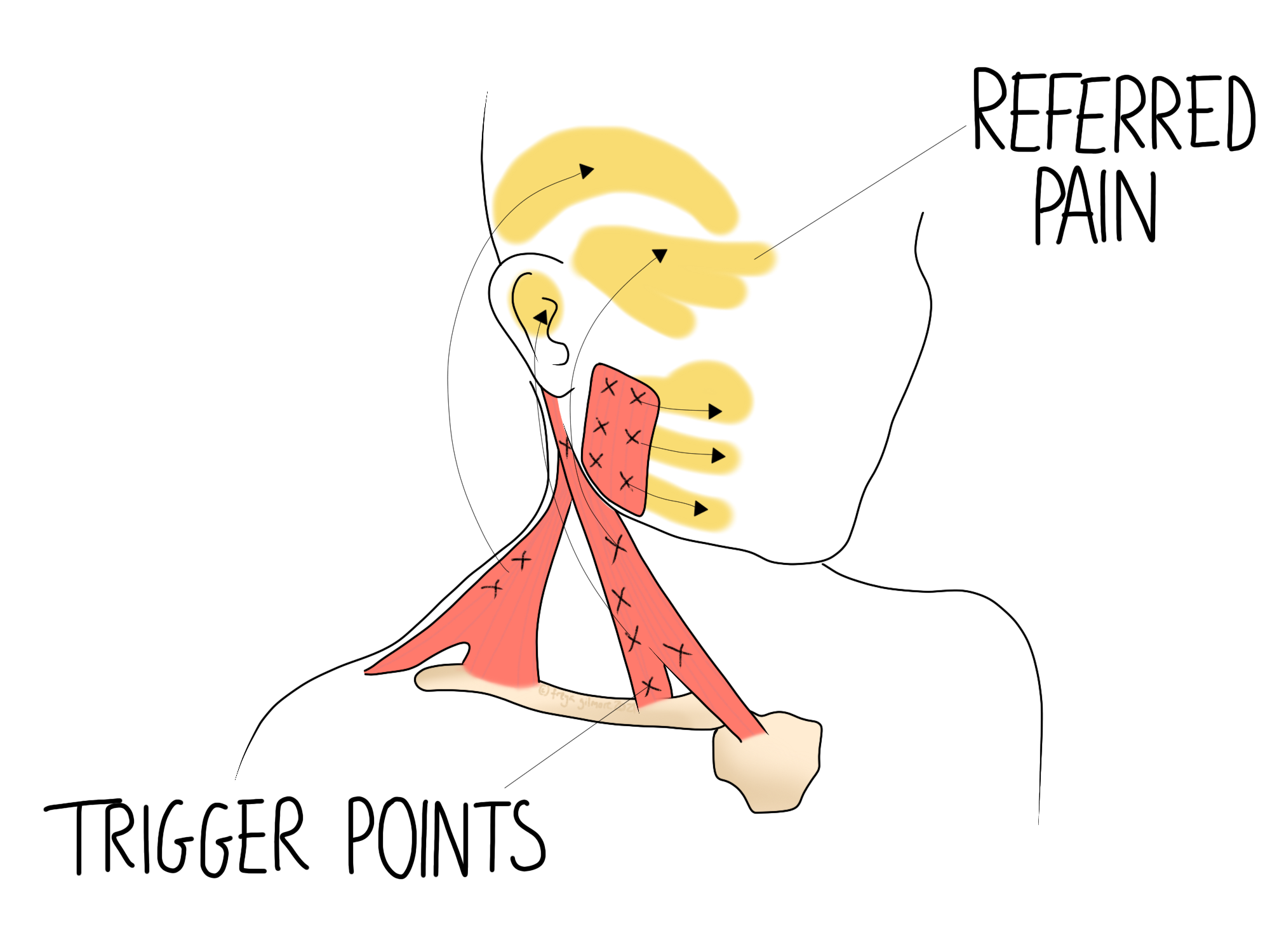Trigger Points
Sometimes you might find a “knot” in a muscle, which feels better when you massage it. Other times, pressing into the knot causes a strange pain somewhere else. This might be a trigger point.
Trigger points (TrPs) are quite controversial as they are not the most heavily researched topic. The basics are that TrPs are bands of tight muscle, and when active, they can cause unusual symptoms. These unusual symptoms may be local to the TrP, or more distant, but when they are distant they tend to follow a pattern specific to their location. Symptoms of a trigger point include:
a harder “knot” within muscle
a deep, dull, nagging ache in a muscle
a point that is pressure-sensitive
pain that started for no obvious reason, comes and goes, and may move around the body
heat, massage, and exercise can provide some relief
Referred Pain
TrPs are just one example of the body detecting pain in the wrong place. This can be a difficult concept to explain, as it can be misconstrued as “it’s all in your head”. When pain is referred, the brain picks up the signal from the nerve that supplies the painful area. This nerve also supplies sensation to a larger chunk of the body. The brain receives a message that there is a problem somewhere in this nerve’s domain, but misinterprets the specifics.
You might be able to spot your own referred pain if you press into the painful area and realise that it doesn’t change your symptoms at all. Your osteopath might spot it based on the pattern. Although we don’t all behave exactly as the textbooks say, we do tend to follow roughly the same referral patterns. The hip refers to the groin, and much of the shoulder refers to the deltoid muscle.
Misdiagnosis
The image above shows how muscles of the jaw and neck can cause pain into the face. The muscle in the cheek (masseter) is one of the better documented trigger point sites. Problems in this muscle can often be misinterpreted as tooth pain: 2/3 of the muscle will refer pain into the teeth.
Similarly, there are muscles in the buttock and thigh that can cause pain down the back of the leg. This can mimic sciatica, but treating the back will not solve the problem if it’s actually a trigger point. Likewise, it would be equally ineffective to treat sciatica as a trigger point. Your osteopath will work to get an accurate diagnosis.
A more general misdiagnosis is between TrPs and fibromyalgia. Fibromyalgia is a difficult condition to diagnose as it is functional. This means that although the symptoms are there, they do not leave a trace on medical investigations such as MRI or biopsies. As a result, it is a diagnosis of exclusion: one for when everything else has been ruled out. One of the main symptoms of fibromyalgia is general pain or increased sensitivity. These are symptoms that cross over with trigger points. If your TrP symptoms come with fatigue and brain fog, mention these additional symptoms to your osteopath as it may warrant further investigation. Your osteopath will work to understand the cause of your symptoms, and can refer on if necessary.
If you suffer from the symptoms of trigger points, make an appointment online now.

